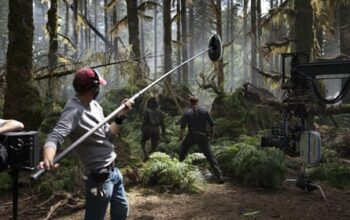T
After three years, Denis Villeneuve has brought us back to the world of Dune. The French-Canadian filmmaker took a risk with the first Dune film, adapting only half of Frank Herbert’s sci-fi novel from 1965. Part Two continues where the first film left off, with Timothée Chalamet’s character, Paul Atreides, trying to win over the Fremen on the desert planet Arrakis while carrying the weight of the universe on his shoulders, according to the prophecies.
Similar to the previous installment, the latter portion of this impressive and ambiguous saga explores elusive propaganda, the influence of belief, the perilous consequences of legendary fate, rebellious movements, nuclear arms, and tyrannical oppression. Additionally, massive sand-dwelling creatures are featured in a climactic battle scene. The overly promotional previews, combined with overwhelmingly positive critiques, exceptional audience ratings, and a traditional media campaign led by four rising actors, propelled Dune: Part Two to surpass its anticipated box office success – earning $81.5 million domestically and a total of $178 million, making it the highest-grossing opening weekend since Barbie.
It is difficult to discuss spoilers for a book that is almost 60 years old. However, beware of spoilers, as there was a lot of anticipation regarding how Villeneuve would approach the second half of the book – would he stay true to the source material? Do the sandworms live up to their reputation? What are your thoughts on Austin Butler, or the unexpected ending? Now that you have watched what could potentially be the biggest movie of the year, let’s have a conversation.
Arrival
Before the Warner Bros title card appears, we are greeted with a forceful statement, displayed on a black background: “Controlling the spice means controlling everything.” This epic sci-fi film is clearly inspired by the influence of oil in the Middle East, and we are excited to be back! Princess Irulan, portrayed by newcomer Florence Pugh (who, as always, effortlessly embodies the time period, location, and galaxy of her character), summarizes the events so far in a two-minute monologue: House Atreides has been nearly wiped out on Arrakis, in a secret plot orchestrated by her father, the Emperor, in collusion with the blatantly malicious Harkonnens.
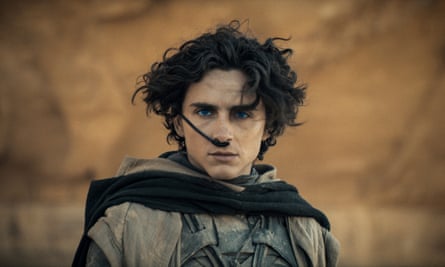
The story picks up where the first movie ended, or shortly after, with Paul and his mother Jessica (played by Rebecca Ferguson) in the vast desert. They have recently joined a tribe of Fremen fighters, led by Stilgar (played by Javier Bardem). Director Villeneuve has shortened the timeline on Arrakis from eight to nine years to a few months, which leads to a fast-paced plot. The group is on the move, carrying the body of Jamis (played by Babs Olusanmokun), the Fremen warrior whom Paul killed in Part One. Suddenly, they come across a group of Harkonnens who are either searching for Paul, planning to annihilate the Fremen, or both.
Villeneuve’s portrayal of the Harkonnen foot soldiers and Fremen may have been lacking in depth, but the scene where the Harkonnens fly to the top of a desert mountain is impressive. The Fremen’s attack on a Harkonnen spice harvester is also quite remarkable. Each battle in the film is visually stunning, and the depiction of Fremen collecting water from Harkonnen bodies adds a disturbing element to the desert landscapes.
Womb with a view
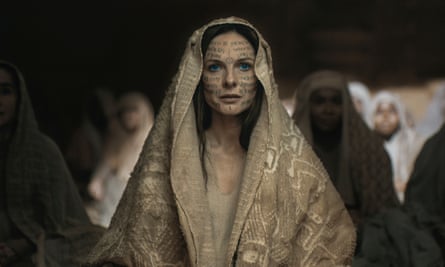
Display the image in full screen mode.
I will not delve too deeply into the deviations from the book – my colleague Tom Huddleston has thoroughly explained them here – but essentially, some modifications were made for the sake of efficiency: Thufir Hawat (portrayed by Stephen McKinley Henderson in the first film) is not featured, Leto II (thankfully, in my opinion) is not included, and Count Fenring (portrayed by Tim Blake Nelson, who was reportedly hired to play him) is missing as well. One of the most significant changes is the portrayal of Alia, Paul’s younger sister, who only appears in utero throughout the movie, with the exception of an adult cameo by Anya Taylor-Joy in Paul’s vision induced by worm venom. However, she still plays a vital role as an embryo that director Villeneuve chooses to showcase, in order to illustrate how Jessica’s consumption of the Water of Life (worm venom) provides her with “pre-born” abilities and sheds light on her motivations.
Ferguson’s portrayal is perfectly eerie and intense as Jessica takes on the collective memories of the Fremen culture in order to use them to convert vulnerable individuals into believers of the Lisan al-Ghaib. This prophecy, planted by the secretive Bene Gesserit for centuries, demonstrates the soft but powerful influence that women have historically wielded. As Jessica transforms into the Reverend Mother, she manipulates faith and controls cultural memory for her own benefit, highlighting the disturbing reality of colonial violence. The bizarre element of her communicating with her telepathic fetus only adds to the unsettling tone.
Desert romance
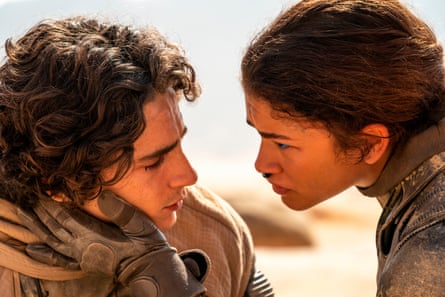
Villeneuve has approximately one hour left before he must leave Arrakis and attend to other matters. During this time, we must be convinced that Paul and Chani, the Fremen warrior portrayed by Zendaya, develop feelings for each other. Fortunately, Zendaya and Chalamet have an undeniable chemistry, and Villeneuve includes a couple scenes of playful banter as Paul undergoes tests in the desert – such as Chani teasing him about his “sandwalking” and teaching him how to construct wind traps.
Compared to Villeneuve’s colleague Christopher Nolan, who incorporated a sexual encounter in his successful film Oppenheimer last year, Dune: Part Two remains relatively mild. We are treated to a brief kiss, which was featured in the trailer, against the backdrop of the stunning desert scenery. There are several expressions of love and commitment, with Paul confessing to Chani that he wishes to be on the same level as her. This hints at the potential downfall of their relationship. Later, during a moment in their tent after being intimate, they discuss typical mother-in-law problems, with Chani admitting her role in causing trouble and Paul displaying exasperation.
From Elvis to Feyd-Rautha
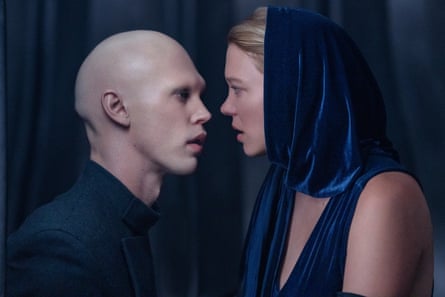
Show the image in full screen view.
Austin Butler, known for his portrayal of Elvis Presley, takes on the role of Baron Harkonnen’s nefarious nephew Feyd-Rautha in Part Two. Butler’s performance is stellar, showcasing a brilliant, bald, and brutal interpretation of the character. With slicked black paint and an unpredictable nature, his portrayal is both menacing and unpredictable. Filmed in black and white with contrasting white skin and black teeth, Butler’s appearance is striking and, frankly, appears insane. Even Princess Irulan acknowledges his psychotic tendencies.
He is also notably muscular and exudes a sense of danger. Butler has abandoned his Elvis-like manner of speaking and now uses a menacing, gravelly voice similar to Stellan Skarsgård. According to Bene Gesserit reports, Feyd-Rautha is a highly intelligent sociopath who has killed their own mother, has a thirst for pain and humiliation, and is susceptible to sexual manipulation. Therefore, to many, he is seen as attractive. In contrast to the often dry and mechanical nature of Dune: Part Two, Butler’s Feyd-Rautha adds a touch of psychosexual intensity. It’s no surprise that his brief encounter with Léa Seydoux’s Lady Fenring, a skilled seductress of the Bene Gesserit, where she uses mind control to make him undergo the hand-in-the-box test (as seen in the first film) has become a popular meme.
Is Christopher Walken appearing in Dune?
Selecting Christopher Walken to play Padishah Emperor Shaddam IV was an unexpected choice for many Dune enthusiasts. The 80-year-old actor is not typically known for his delivery of dramatic and powerful speeches. Personally, I found this to be one of the few drawbacks of the film. Walken physically embodies the role of an aging emperor burdened with secrets, but his voice seems out of place for a character set 24,000 years in the future and named “Jessica”. His iconic accent is immediately recognizable and has been the star of its own BMW Super Bowl commercial. However, in moments such as when Emperor Shaddam is physically intimidated by Paul to kiss the ring, Walken rises to the occasion without uttering a single word.
Zendaya’s movie?
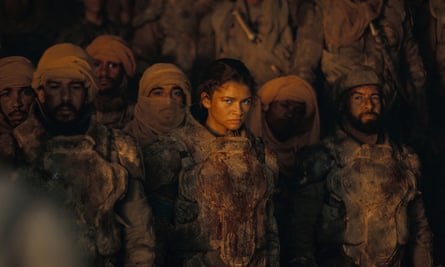
One of the main criticisms of the first film was that it focused too much on teasing Zendaya’s character, Chani, with only a few glimpses of her until the last half hour. However, in Part Two, there is finally more of Zendaya as Chani, as the filmmaker has made changes to the story to make her a crucial moral figure. In this universe, there has always been doubt surrounding Paul’s alledged destiny and abilities, questioning if it was preordained or manipulated for destructive purposes. In Villeneuve’s interpretation, Chani is skeptical from the beginning, questioning Paul’s intentions and the extremist Fremen prophecies. “You aim to control people? Tell them a savior is coming,” she remarks. “Then they will wait – for centuries.”
Chani is arguably tasked with carrying too much – she’s supposed to sell the romance with Paul, represent his true connection to the Fremen, embody the anti-colonialist themes of the book, poke fun at Stilgar’s fanaticism for comic relief and undercut the classic Chosen One prophecy narrative with some sense. The fact that Zendaya makes her still feel like a person – one whose heart gets broken as Paul takes over the Imperium, leads the Fremen to more war and proposes to Princess Irulan — is an accomplishment.
The Final Showdown

Display the image in a larger size.
I don’t have much to say about the final showdown in Arrakeen other than watching legions of warriors ride in on sandworms made me grin like a child. We are blessed to live in the age of big-canvas auteurs and CGI.
Sad boy rules
At the end of the film, Chalamet’s makeup transforms to match the tone – Paul’s complexion appears burdened or possibly betraying, and Chalamet’s portrayal is unemotional (“you die like an animal” being the final words the Baron hears). It’s an ambiguous conclusion to Paul’s journey: he achieved his desired revenge and more, yet it lacks any sense of triumph. He is physically beaten, stabbed twice, and appears lifeless, having broken all of his promises to Chani.
Given its subtext, one inescapable reading of Dune for me was as a great parable for mega-fame – what it means to be chosen, willingly or through great effort; what you lose to being known and cherished by millions, to having whole economies and livelihoods depend on an idea of you. Dune might be one of the few films left to refute the “death” of the movie star, but it looks taxing.
Are you baiting Warner Bros once more?
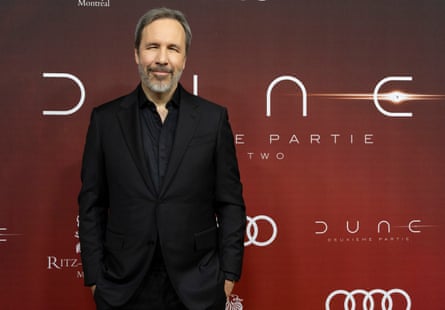
Villeneuve took a major risk by only adapting half of Dune in the first film, even though there was no guarantee of a sequel being approved. Now, it seems he is taking another chance on himself. The closing scene of the movie features Chani, not Paul, as she emotionally summons a sandworm to follow her own path – a significant deviation from the source material. Villeneuve has openly expressed his desire to continue with a third film, based on Dune: Messiah, which is likely to continue Chani’s storyline. With the success of Part Two this weekend, it seems likely that we will see more Dune in the future.
Source: theguardian.com

